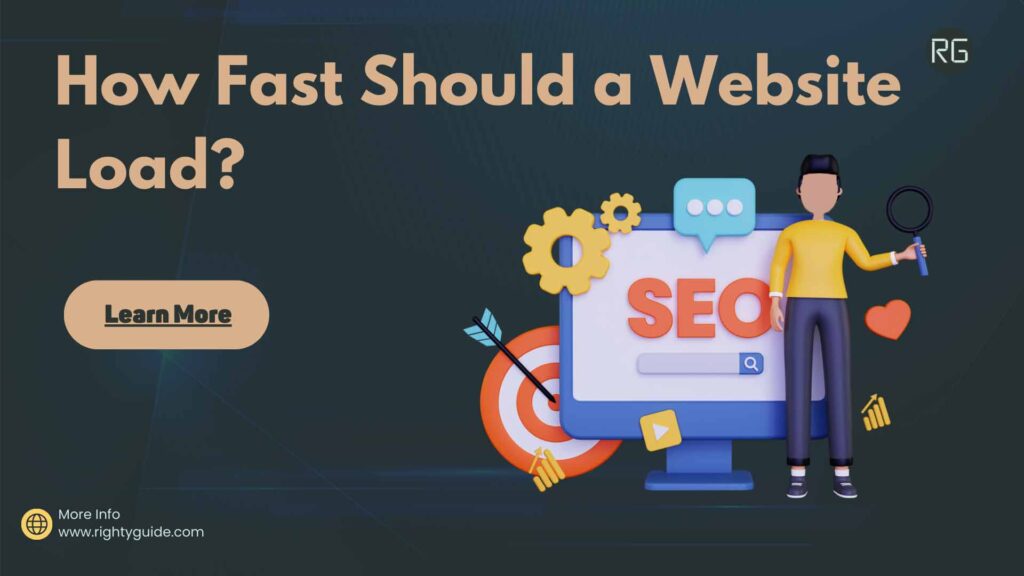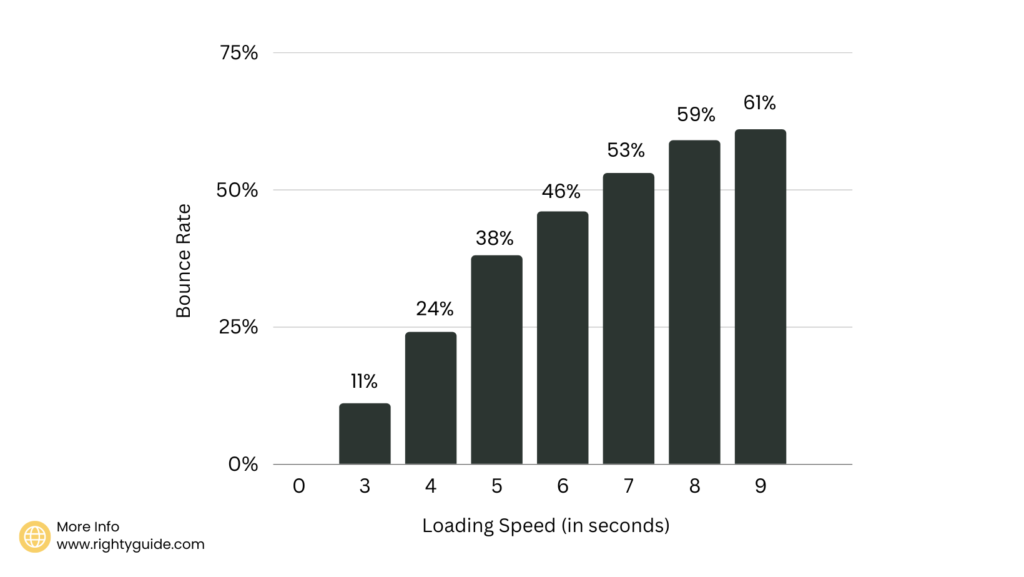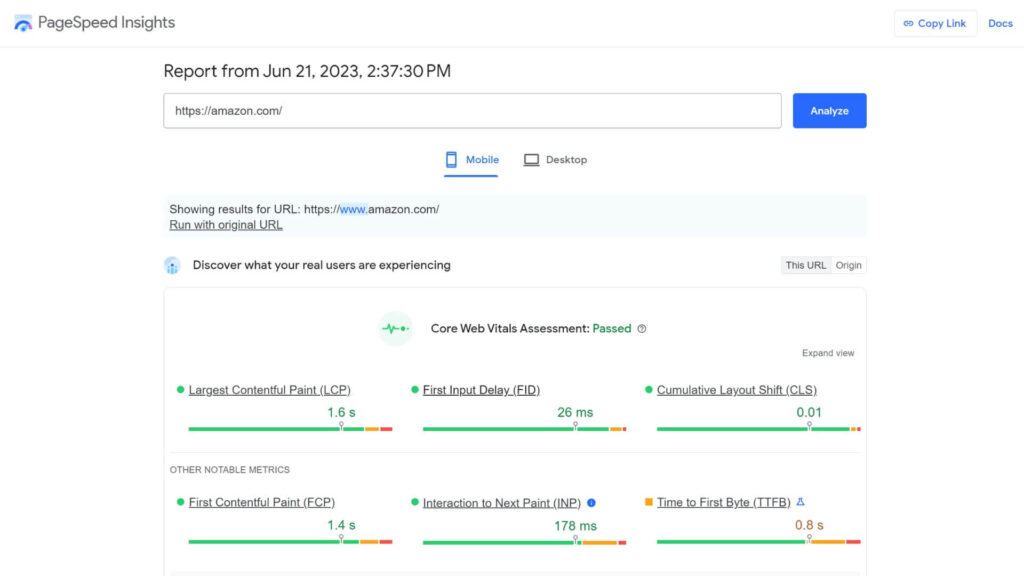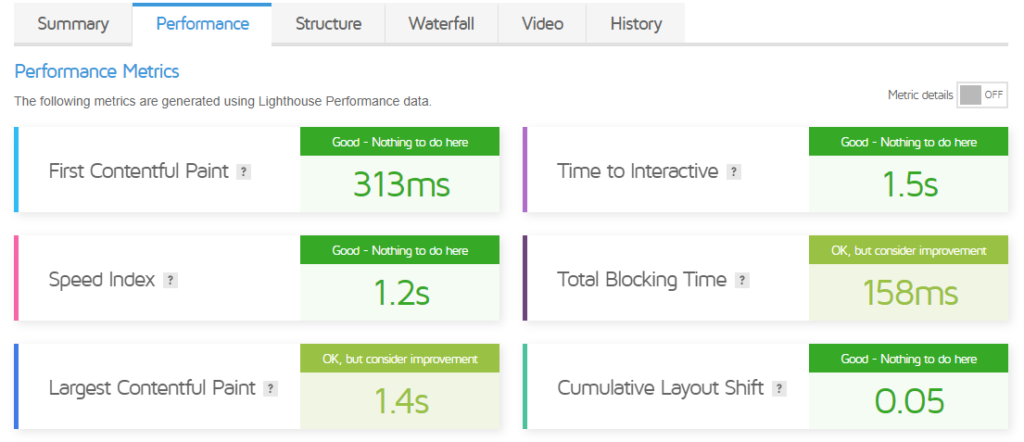How Fast Should a Website Load?
-
Abdul Wadood

The loading speed of your website can make or break your online presence. Picture this: you want to view a website, but it’s taking forever to load. How would you feel? Frustrated, right?
A website should load fast. But how fast? Let’s find out in this article.
Table of contents:
What’s the Ideal Loading Speed for a Website?
Speed matters a lot in today’s digital world. Internet users are impatient and want a page to load as soon as they click on it. If your website takes forever to load, people will lose their cool and leave your website, which will increase the bounce rate.
Bounce rate is a metric that indicates the percentage of visitors who visit your website but leave without taking any action. A higher bounce rate will indicate to search engines that readers don’t like your content, which decreases your website’s rank.
Search engines like Google consider page loading speed as one of the primary ranking factors. If you write high-quality content but don’t optimize the loading speed, the content won’t rank high in the search results.
The Sweet Spot
So, how quick is fast enough? Most users want a website to load within 3 seconds. If it takes 4 seconds, the bounce rate increases to 24%. While if it takes 5 seconds, the bounce rate increases to 38%. Here’s a graphical representation that shows the increase in bounce rate for every second delay.

You can make your website load within 3 seconds for desktop users. But it’s difficult to achieve the same level of optimization for mobile, especially if your website is resource-rich.
Most large websites take about 7 seconds to load fully. Well, people don’t stick for that long, correct? Yes, but there’s a nifty trick to work around this issue.
You can reduce the First Contentful Paint (FCP) time to display some parts of your website to the users while the rest loads in the background. When users go through the loaded part, the remaining will finish loading, making them stay on your website.
Tips To Make Your Website Load Faster
1. Optimize Images
Adding images to your article can make it stand out and help to keep the users engaged. But they can drastically increase the loading time if you don’t compress them before uploading.
Fortunately, many free tools like TinyPNG can help you compress the images without compromising much on the quality.
2. Minify CSS and JavaScript
When developers write codes, they include additional spaces and comments to make the code readable to them. Web browsers don’t require these codes for loading your page. When you minify your code, you remove unwanted characters and spaces, thus improving the loading speed of your website.
3. Leverage Browser Caching
Caching refers to storing static copies of your website’s files in a temporary storage location for quick access. When your website is cached, the user’s browser doesn’t have to send out as many requests, making the page load faster for them.
If you use WordPress, you can use free plugins like WP Fastest Cache to cache your website.
4. Use Content Delivery Network (CDN)
CDN distributes your website’s content across multiple servers worldwide, allowing faster delivery to users based on their geographic location.
KeyCDN, Cloudflare, Amazon CloudFront, and Google Cloud CDN are popular CDNs that can help speed up your website.
5. Improve Hosting
If you want your website to load fast, you should choose a reliable hosting provider with fast servers. We recommend HostGator as they offer reliable hosting solutions at a reasonable price.
Here are the different types of web hosting.
- Shared hosting: It’s affordable and the best option for new websites. In shared hosting, multiple websites are hosted on a single server and share server resources, so you can’t expect a very fast loading speed.
- Managed WordPress hosting: Not all hosting providers offer this option, but some do. Managed WordPress hosting is similar to shared hosting but with additional WordPress features.
- Cloud hosting: In cloud hosting, your website’s resources are shared with multiple servers across the world, making your website load faster. It’s suitable for websites with medium traffic.
- VPS hosting: In VPS hosting, a single physical server is split into multiple virtual dedicated servers so you get dedicated resources for your website. You can opt for this hosting if your monthly website visitors are less than 100,000.
Dedicated hosting: With dedicated hosting, you’ll have complete control over your website’s resources as a server is allocated just for you. If your website is resource-rich and receives a lot of monthly traffic (over 100,000 visitors), this hosting is the right option.
6. Implement Lazy Loading
Lazy loading is a technique that defers the loading of non-critical content, such as images or videos, until the user scrolls or interacts with them. This approach reduces the initial page load time, resulting in faster-perceived speed.
7. Reduce Redirects
Reducing redirects can reduce server response time, thus improving the loading speed of a page. However, the exact performance boost depends on the number and complexity of redirects and your website’s overall structure.
Note: It’s impossible to avoid redirects, especially as your website grows. But you should ensure to keep them under check. Too many redirects aren’t good and can affect the loading speed of pages.
How To Measure Website Loading Speed?
If you want to measure the exact loading speed of your website, you’ll need to use a speed testing tool. There are many website speed testing tools out there, but among them, Google PageSpeed Insights and GTmetrix are the most popular.
Google PageSpeed Insights

Google PageSpeed Insights measures the loading speed of your website and provides valuable insights to enhance user experience and boost search engine visibility. It highlights issues like large image sizes, render-blocking resources, poor web vitals, and unoptimized coding. Google PageSpeed Insights analyzes both the desktop and mobile versions of your website.
By implementing the suggestions given by Google PageSpeed Insights, you can drastically boost the loading speed of your website. If you aren’t familiar with optimizing your website’s codes and other technical elements, you may consider hiring a developer.
GTmetrix

GTmetrix is another popular, reliable, and easy-to-use website speed-testing tool. Enter your website’s URL on GTmetrix to get a detailed report and suggestions to improve the loading speed.
GTmetrix displays a detailed waterfall chart to help you easily identify and fix slow-loading elements. This tool generates scores based on Google’s PageSpeed Insights and Yahoo’s YSlow metrics.
GTmetrix provides suggestions such as CSS minification, JS minification, and optimizing image sizes. By implementing these suggestions, you can improve the loading speed of your website. However, note that, on GTmetrix free version, you can only test desktop loading speed. If you want to test mobile loading speed, upgrade to the paid version, which starts from $13/month.
Conclusion
The loading speed of your website can significantly impact the user experience and its ranking on the search results. We recommend you optimize your website to load under 3 seconds. As the time increases to 4 seconds, the bounce rate increases by 24%. And it keeps on increasing as your website takes longer to load.
If your website is small, it’s possible to make it load in under 3 seconds. The same isn’t the case for larger websites. But regardless of the size of your website, optimize it to load in under 7 seconds. You can use Google PageSpeed Insights to test the loading speed of your website.
